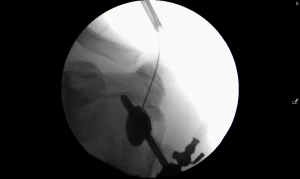Figure 1: Shoulder dislocation with a bone defect (Hill-Sachs defect) of the humeral head and a fracture of the glenoid cavity.
Shoulder dislocation often also results in injury to the humerus or glenoid cavity. A defect (a dent) occurs in the posterior portion of the humeral head, and an anterior portion (of varying size) breaks away from the glenoid cavity of the scapula. If these injuries occur at the same time, the likelihood of the next shoulder dislocation is high. We have operated on two patients with this combined injury in the last few days.
In an elderly patient, the method of choice for us was surgery according to the French surgeon Latarjet, in which a scapulothoracic process is separated, pulled through the split subclavian muscle, and the affected glenoid cavity of the scapula is reconstructed with it. This operation is very successful and used worldwide, but not widely used in German-speaking countries.
We initially performed minimally invasive arthroscopic reconstruction of a fracture of the glenoid cavity in a younger patient. We then also repaired (repaired) the defect in the humeral head with a mini-invasive arthroscopically assisted surgery. We used the balloon technique (common in spine surgery) to elevate the depressed bone back up. We filled the resulting space inside the humeral head with “artificial” bone. This is a relatively unique technique that completely reconstructs both affected bones and places minimal stress on the patient.
Figure 2: Miniinvasive treatment of the humeral defect with the balloon technique (under optical and X-ray control).
